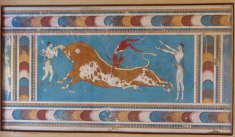Speaker
Description
We present the latest results on the production of strange and multi-strange hadrons in pp and Pb--Pb collisions with ALICE at the LHC energies of $\sqrt{\mathrm{s}}$ = 13 TeV and $\sqrt{s\
_{\mathrm{NN}}}$ = 5.02 TeV. Strangeness production measurements are powerful tools for the study of the thermal properties of the deconfined state of QCD matter, the Quark-Gluon Plasma.
Thanks to its unique tracking and PID capabilities, ALICE is able to measure weakly decaying particles through the topological reconstruction of the identified hadron decay products.
Transverse momentum spectra of $\mathrm{K}^{0}_{S}$, $\Lambda$, $\Xi$ and $\Omega$ at central rapidity are presented as function of the collision centrality.
The so-called baryon anomaly in the ratio $\Lambda$/$\mathrm{K}^{0}_{S}$ is studied to probe particle production mechanisms: the position of the peak is sensitive to recombination processes, the high-$p_{\mathrm{T}}$ part can provide revealing insights on fragmentation and, finally, the steepness of the rising trend observed for $p_{\mathrm{T}}$ $\sim <$ 2 GeV/$c$ can be
connected to the hydrodynamic expansion of the system.
In order to study strangeness enhancement, hyperon yields are normalised to the measurements of pion production in the corresponding centrality classes.
Comparisons to lower energy results as well as to different collision systems will be shown. The talk is aimed to present a complete experimental picture that is used as a benchmark for commonly adopted phenomenological models, such as the thermal statistical hadronisation approach.
